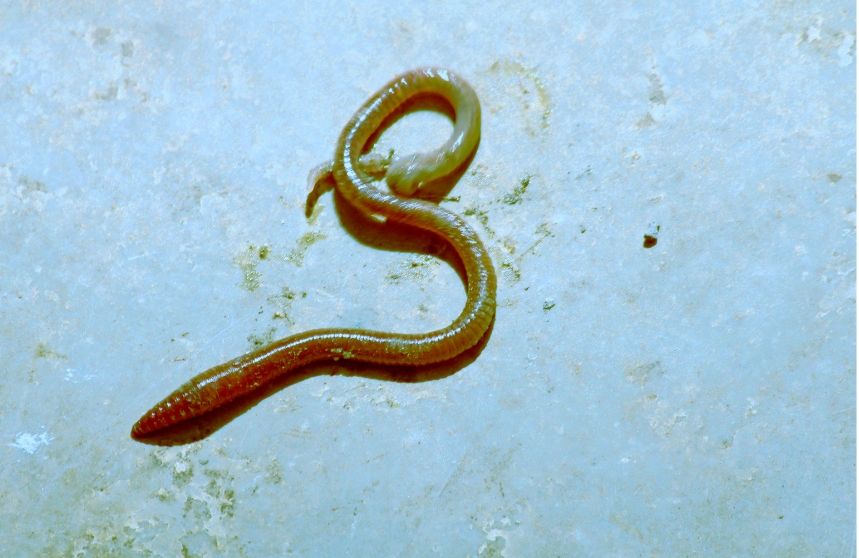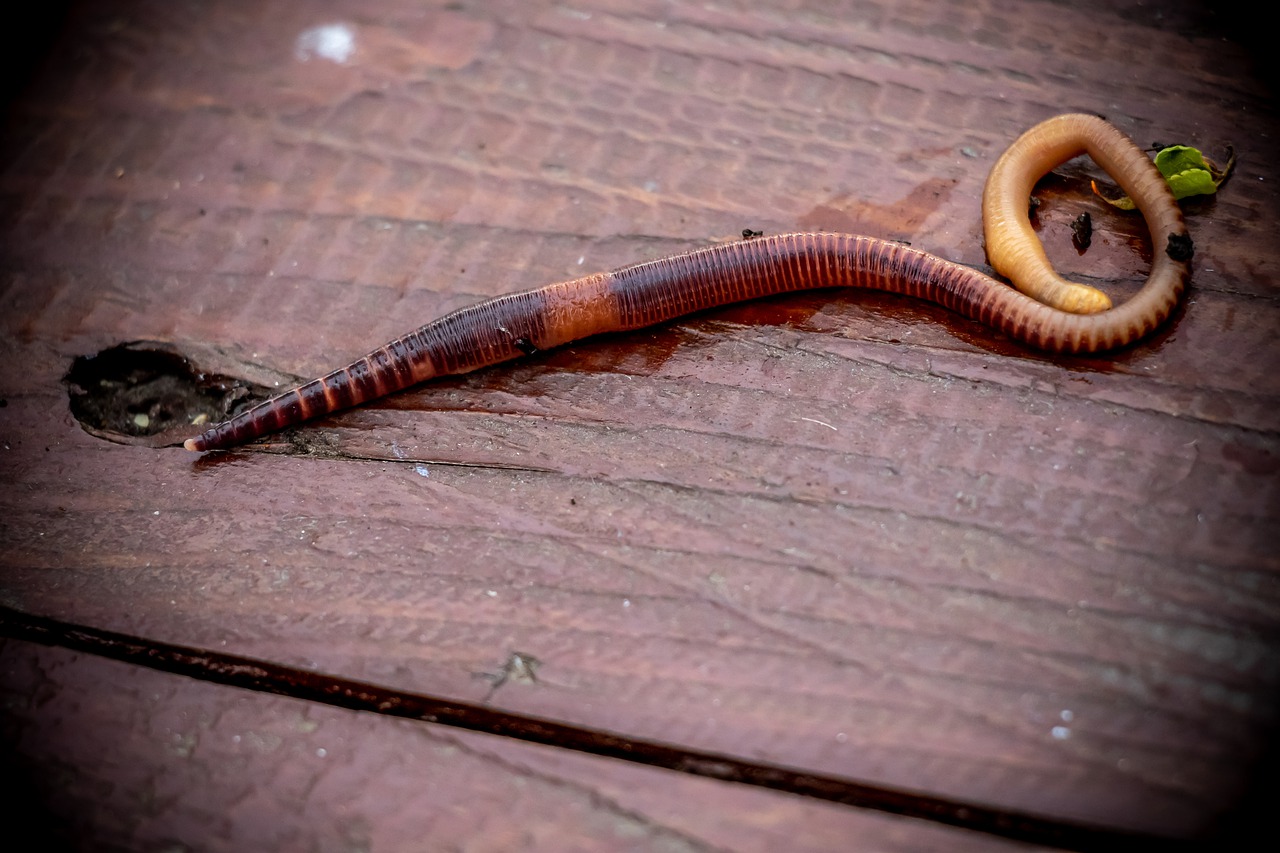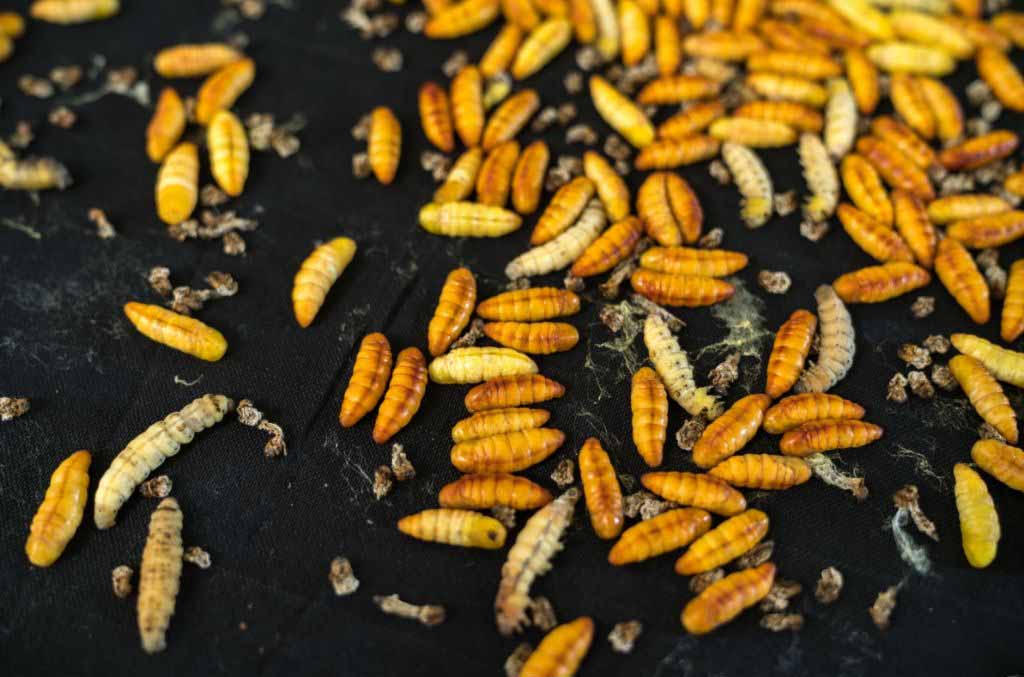

The earthworm is tubular looking and found across the world. They are from the phylum Annelida family. Earthworms are found in soil and feed on live and dead organic matter. These harmless creature often creeps out people when they are seen in bathroom. I personally also freak out when I see them in bathroom and so are you.
So, hоw to gеt rіd of eаrthwоrm in bаthrооm? Scrubbing, draining and spraying insecticide are some of the best ways that can be used to get rid of earthworm from bathroom. These are slow and won’t be able to run away if you use some remedies over them.
Continue reading to know what to do in details.
How Does Earthworm Help Humanity
They are considered a boon to farming for the following reasons:
Biological: Earthworms carry the foliages and other organic matter on the top of the soil to its living quarters below the ground. These foliages and organic matter are then shredded to pieces to form humus, which enriches the quality of the land. This leads to better quality and yield of crops.
Chemical: They ingest many small particles of sand and minerals that are on the soil surface. The earthworm digests these, and its excreta is found to be very rich plant nutrients. These mix with the soil to provide natural fertilization to growing plants.
Physical:The movement of the earthworms thro’ the soil particles, passages to their living quarters leads to ambient soil structure for plants to grow. These material changes by the earthworm lead to better aeration of the soil and drainage of water.
Physical feature
Earthworms generally live on soil, and their structure gets adapted to its environment. Some of their physical characteristics are as follows:
- Their digestive system extends across their bodies.
- They respire thro’ their skin.
- It has a central and peripheral nervous system, which gets linked to the neurons of every segment of their body.
- Fluid-filled coelom runs across their entire body length with a simple blood circulatory system.
- They have multiple receptors around their mouths part.
- They have uni-directional muscle sets along each of their body segments, allowing them to move forward.
- Similar muscles help it excrete the digested food thro’ its anus.
They are hermaphrodites and carry both male and female sex hormones. They do not have a skeletal system, and the coelom maintains their physical structure.
‘Earthworm’ is a general term used for the largest family of Oligochaeta. They are also known as dew worm, angleworm, rain worm, or the nightcrawler, locally.
The larger varieties of earthworms, which live on the ground, are called megadriles, while the smaller and thinner versions, which are semi-aquatic, are called microdiles.
Depending upon the species of earthworm, they vary between 10mm length and 1mm in width to a whopping 3mtr in length and 25mm in diameter. The common earthworm found in soil grows to around 14inch long.
Earthworms are preyed upon by mammals, birds, reptiles, and insects. However, they feed on organic matter and micro-organisms. They are found to feed on dead grass, leaves, rotting fruits, and vegetables. They also feed on bacteria, algae, and fungi.
Can Earthworms Get Into The Bathroom?

It’s pretty unlikely for earthworms to get into your toilet. Given below are some reasons why these worms found in your washrooms, are not earthworms:
- Earthworms prefer soil compared to your concrete bathroom floors.
- They will not climb walls to get into your bathroom window.
- They will get drowned if they try to reach your bathroom, thro’ your drainage pipe.
The only way an earthworm can get into your bathroom will be if it is on the ground floor, with adjacent fields. Being moist, they might creep into the washrooms, thro’ some cracks and crevices on your floor, drainage, or walls.
In case, you actually see an earthworm in your bathroom, pick it with a stick and throw the hapless creature outside or drop into your flowering pot. They don’t intend to stay in your washroom since they have strayed only by mistake.
Then, What Are These Creatures In The Bathrooms?
These slimy creatures found in your bathroom are not worms at all. They are larvae of moth fly or drain fly. Drain flies build their nest inside your drainage system, in nooks and corners. They flourish in moist, wet areas. The larvae on close inspection appear black or brown, with pale in the middle and darker at the edges.
Moth flies and drains fly feed on organic debris, moist slimy areas, frequented by humans.
Life-cycle of these larvae: The eggs of these flies hatch into larvae in two days. These are found frequenting your toilet, in search of organic food. After nearly 10 to 24 days, depending upon the species, they enter into the pupa stage for a short duration of a day or two, before turning into adults. Since the larvae have around 24 days to live, you would find them in different sizes.
Drain fly or moth fly: This drain or moth fly cannot fly much and found near their place of stay. They would be seen buzzing around your drain area, near the commode, washbasin, or your bathing tub. They could also be present in your kitchen near the sink, pump house, or near damp areas in the basement.
They live inside drain pipes, waste disposal chutes, toilet tanks, along the edges of the sewerage system, and overflow pipes. These sewer, drain, filter, and sink flies are harmless but are quite annoying to humans.
The Larvae Or The ‘Earthworm.’
These larvae can get submerged in water but need to come out for oxygen. They flourish in moist crevices or along the slimy inside of your drainage system. If your bathroom gets infested with these drain flies, you can be sure of a large number of these larvae in your drain pipes. Only a few find their way around your bathtub, bucket, and basin.
Physical feature: These larvae are generally four and 5mm in length. They are flat and cylindrical. Their body consists of a series of rings called the annuli, which helps them to move forward.
Adults: The adults are half the size of the larvae, but broader. They are about 1/4th to 1/8th inch in length. They have tiny wings and are black or brown. Their bodies and wings have a covering with small and fine hairs. They live for around 20 days and are nocturnal. They do not drown easily or get affected by any fumes or get dehydrated. They have a flattened body and no legs. They have suction discs below their belly to help them from slipping.
Breeding source: Immediately after they are born, these drain flies lay around 50-100 eggs, around the drainage pipe rim or slimy surface, above the water level.
How To Get Rid Of The Drain Flies
 For you to address the larvae problem, you need to address the source first. You should identify the source of the breeding ground of the drain flies and then look at their extermination.
For you to address the larvae problem, you need to address the source first. You should identify the source of the breeding ground of the drain flies and then look at their extermination.
Identification
- These flies typically live in drains and hence their name. They live inside the drain on the trap and all places above the water level – sludge, slime, human hair.
- Place some tape with small holes for air to flow. If the fly is breeding inside the drain, they would be stuck when they try to fly out.
- If there are floor tiles that are broken or cracked, the flies breed under such nooks and corners. Check their presence at these locations too.
- The space below or around bathtubs or shower pans is prone to flies’ breeding sites.
- Since the space behind the shower area is continuously damp and moist, if there are cracks and spaces behind the wall and floor edges, these are sure shot favorite space for the drain flies to live.
- If there is a leakage in the drainpipe, look for crawl spaces under the sinks, commode, or bathrooms corners. The presence of dead moths in a spider web would confirm their breeding presence.
- They may have multiple breeding grounds. Identify all such places for addressing the extermination.
- Moth and drain flies love moist areas to breed, such as wet mops, dirty, damp corners, debris, storm drains, or rotting garbage.
- Clean the gaps and cracks, and seal the corners, grout the tiles in place. Close all visible breeding spots of these flies.
- Clean the surrounding kitchen, basement, balconies for any standing water or debris which could become their breeding ground. Even a wet lint under the washing machine or unwashed clothes kept in the corner. Adult flies can fly to their most favorite spot from these locations – your bathroom.
- Check your house surrounding garden and porch areas for dripping air-conditioner, garbage dump, soil manure of any other possible breeding spots for these flies.
- Moth flies don’t bite and are quite harmless. They may carry bacterial germs from their breeding ground.
Extermination
- Take a steel brush with a long handle. Scour inside your drain pipes, so that the slime and film clinging to the sides get removed. Carefully pour boiling water around the edges, so that the entire pipe gets cleaned. Once the pipe has cooled down, pour drain cleaner with enzyme along the whole perimeter, so that inside of the pipe is accessible. The enzyme removes the organic matter, which the flies feed on.
Pour boiling water twice a day for the next few weeks, till you see the flies vanishing completely. Do this for all the drains and water outlets from your bathrooms.
- The best way to deal with drain flies is to keep them out completely. If there are washrooms and shower drainages, which are not frequently in use, pour one part of baking powder and an equal part of white vinegar. Let the mixture foam for an hour or so. Then pour hot water around these drainpipes and outlets.
- Use a plumbing snake to pull out the grime and lumps of human hair, which must have slipped out of the hair catcher and clogged the drain. These are an excellent breeding ground of these flies.
- Use a plunger to remove any remnant eggs and organic matter around the inside walls of the drain pipe.
- Use a fly swatter to remove the remaining flies from your bathroom, so that your environment is free of all flies. Take this measure for the next couple of days, after clean up.
- You should screen your doors and windows to avoid these flies to get into your bathrooms from outside.
How Do You Get Rid Of The Larvae (Earthworm) From The Bathrooms
Follow these routines regularly to keep your earthworms away:
- Scrub the entire toilet, the corners, under the sink, around the commode, along the inside of the bathtub base and around the drainage outlet. Use a hard brush with toilet cleaner, so that all slime and organic deposit like moss, etc. gets eradicated. Let this cleaning regimen gets done every week. By keeping your bathroom surface clean and devoid of organic food, you are discouraging the fly larvae from loitering along the bathroom floors or around drainage outlets.
- You can also use borax and bleach, vinegar, and baking soda to remove organic food from the bathroom surface, corners, and also along the edges of the drainage system.
- If you are not able to reach inside the drainage pipe for cleaning the sides, get professional help for the same. The clog and filth in the drainage pipe must be cleaned regularly to avoid breeding spots of these flies, from where these larvae surface.
- After cleaning all the drains in your bathroom, spread a coat of petroleum jelly around the inside edge of the pipes.
- Plug all unnecessary holes and cracks in your bathroom for any future source of breeding space for these flies.
- You could also spray insecticide or pour diluted vinegar around the edge of the drainage every night to keep your worms away.
- The best way to address this problem on a long term basis is to consult with professionals who would come up with a more lasting solution for your questions. For the amount you spend on this method, would also get you coverage from the re-appearance of these worms for a few months, after which you may have to repeat the process and so on.
Human Worms
Ascaris is a type of worm, parasitic nematode, which is also known as “small intestine roundworm.” Their eggs get deposited in the feces, which mixes with the soil, where plants grow. When humans consume these plants in raw form, these eggs travel into their bodies, germinate and travel to the small intestine where they reside.
A lumbricoides is the largest intestinal roundworm. They lead to the most common helminth infection of humans across the world. This infestation, if not treated, can prove fatal.
Ascaris has been present in humans for thousands of years. They are a long and cylindrical shaped worm.They infect humans mostly in the third world and developing countries. Children are most affected by these worms.
Symptoms of presence, and growth of these worms in your intestine lead to shortness of breath, acute pain in your stomach, diarrhea. In severe cases, patients exhibit malnutrition, weight loss, and learning disorders.
When you undergo a de-worming process, thro’ medication or food supplement, some of these worms get discharged along with your feces. In case you see some of these worms climbing from your excreta, along the side of the commode, then these are not earthworm or fly larvae. They are your worm. Just flush them out along with your feces.
Pour toilet cleaner and brush along the edge of the commode, to ensure that all of them are removed, before flushing out once more. Repeat this process whenever you find this Ascaris in your toilet.
Conclusion
The most important understanding is that what we see as worms in our bathrooms are not earthworms. They are larvae of a moth or drain fly. Since these flies feed on slime and moist surfaces containing human organic wastes, they breed inside the drainage system. These flies lay hundreds of eggs, which germinate into these crawling larvae, which looks like earthworms. These larvae then travel from inside the drains into our washrooms and crawl along the sides, and cracks in our toilet looking for any microbes that they could feed on.
When you see these crawling creatures in your bathroom, then be assured that there’s build-up waste along the drainage pipe, which is not getting flushed out. Find ways and means to loosen this muck, so that the drainage pipe is not enticing for these flies to breed.
Before we could rid these crawling creatures from our bathroom, we must first eradicate the flies. This could be done by cleaning our bathrooms and inside the drains well and maintaining this cleanliness for an extended period. We must also plug all holes, seal all cracks and loose tiles. The entire bathroom must be scrubbed and cleaned of any microbes that these larvae may come to feed. We must also deter these larvae from crawling out of the drains by spraying them regularly with insecticides and lining the inner edges with petroleum jelly.
Though these flies nor the larvae pose any health hazards to humans, their presence in the washrooms makes it feel dirty and unhygienic.
Welcome to my blog. I have been doing pest control for years since my house, garden and pets were always attacked by various kinds of pests and as a result I had to know proper pest control techniques that works. In this blog I share all the tips and tricks that I know and I hope you’ll find it helpful.
